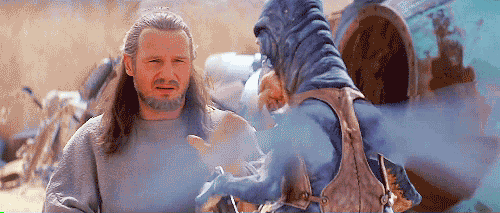I’ve heard the phrase “hungry artist”. It describes people, who’s goal in life is to produce art, but don’t make enough money out of selling their art to sustain comfortable lifestyle.
Now, there are a spectrum of reasons why someone would make art. I’d bet most artists, deep down want to be commercially successful. They want their art to be number one on the charts, to be in museum exhibits, and to bring them millions of dollars. They want to be Beyonce, and Michael Jackson, and Miley Cyrus. They want to Van Gogh and Frank Lloyd Wright. They want to be J.K. Rowling, Hemingway and Tolkien.
And yet, not everyone covets fame and fortune. On the other side of the spectrum might be people who genuinely enjoy producing the art. To them, the thrill of creating art is a reward they treasure more than the hypes of moneys they might get as a result.
They are the pure “hungry artists”. Even though they might not be hungry at all - they might have additional income from their job, or savings or inheritance to draw from, or they might be commercially successful artists even without aiming to be one.
They are blessed to have something they enjoy doing so much. And for that reason, they’ll not be complaining about the hunger. Food and comfort is secondary and non-important to them. They don’t seek money. And they really mean it. It’s not a pose. Vincent van Gogh was an artist who worked hard at his art, for years, with a genuine conviction. He didn’t sell his art, but was lucky to have a brother who supported him. And even when mental illness stroke, he kept on making art. Those paintings are now worth millions of dollars, yet he didn’t paint them for the money.
Contrasting this purity, there are people today who want to make living out of making art. Too many of them. Commercially, we don’t need too many artists or musicians. Most art has no commercial value.
Art expresses and effects emotions, feelings, and thoughts. It creates comfort, or brings you out of your comfort zone. It’s commercial value might be to help improve the mental state of the consumers, to inspire them, to make them happy or relaxed. To change their actions, creating value for them, or for an enterprise that’s using the art.
Art’s commercial value is to be a Jedi mind trick.

There are markets for that mind tricks. And some artist sell them. Eminem is a jedi. Most artist who complain they are not making money of their art are not even padawans.
The chances of being paid are small. It’s a super competitive environment and it favors connections and privilege, with occasional exceptional talent making it through. And art is sometimes easy to copy, leading to winner-takes-all payout, leaving all the inferior artists with nada.
Yet, if a person enjoys making art for its sake, there is nothing stopping them. They need no permission. They just need to cover their living expenses otherwise. But having their lunch and dinner covered, their art is free - as in freedom. It can go in any direction, because the artist is not relying on it to make money. It’s as pure as Van Gogh’s paintings.
And that freedom and purity is what I think the artist community fetishises about the “hungry artists”. About people who don’t “sell out”. Because that freedom might result in a better art. A powerful and deep mind trick. “The force” for art comes from freedom - not from hunger. Hunger is just the cheapest way to find that freedom.